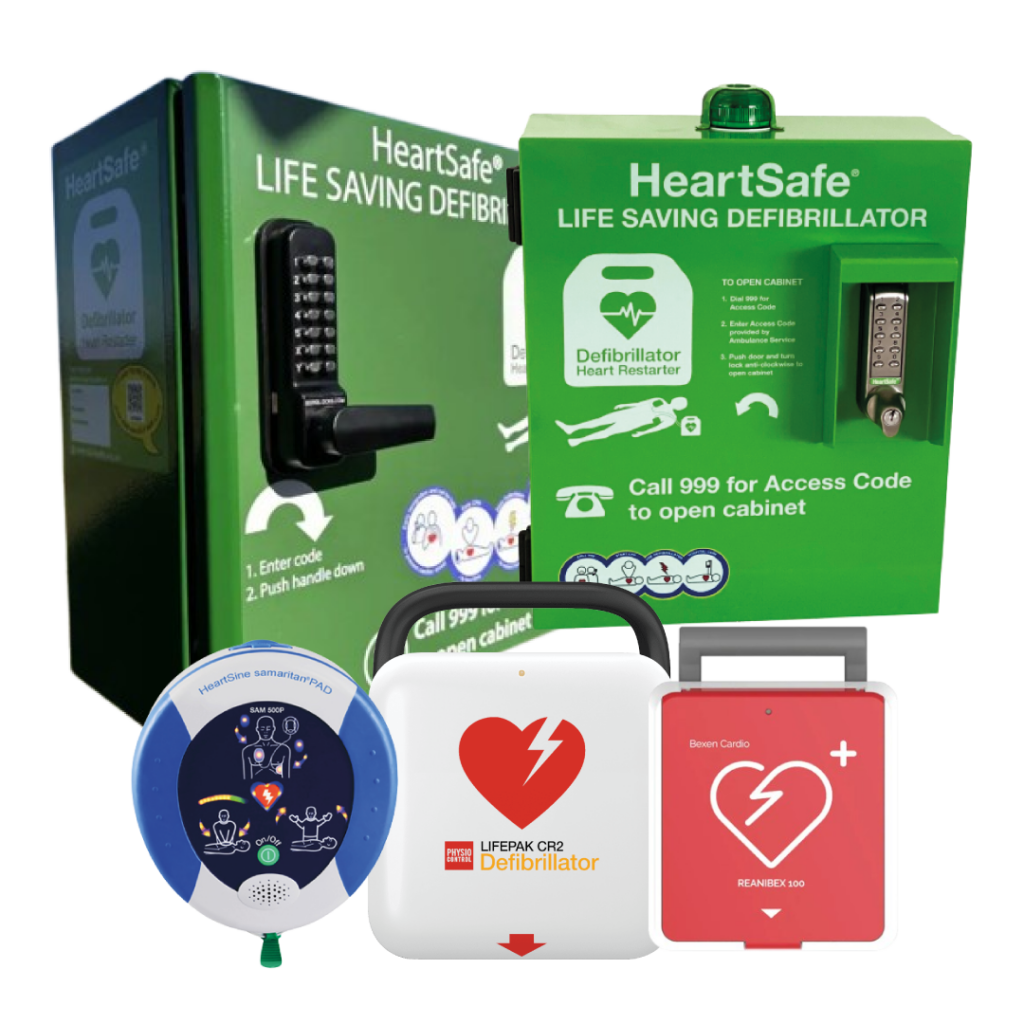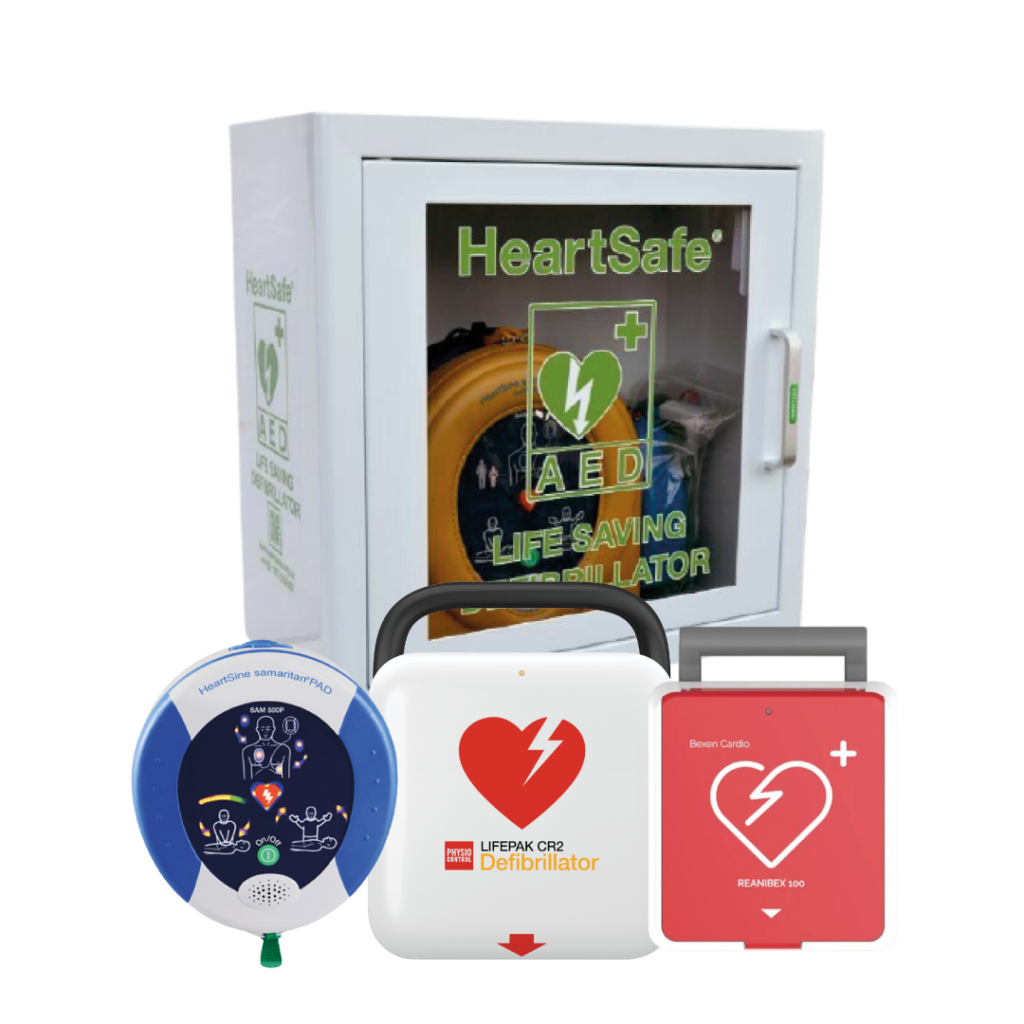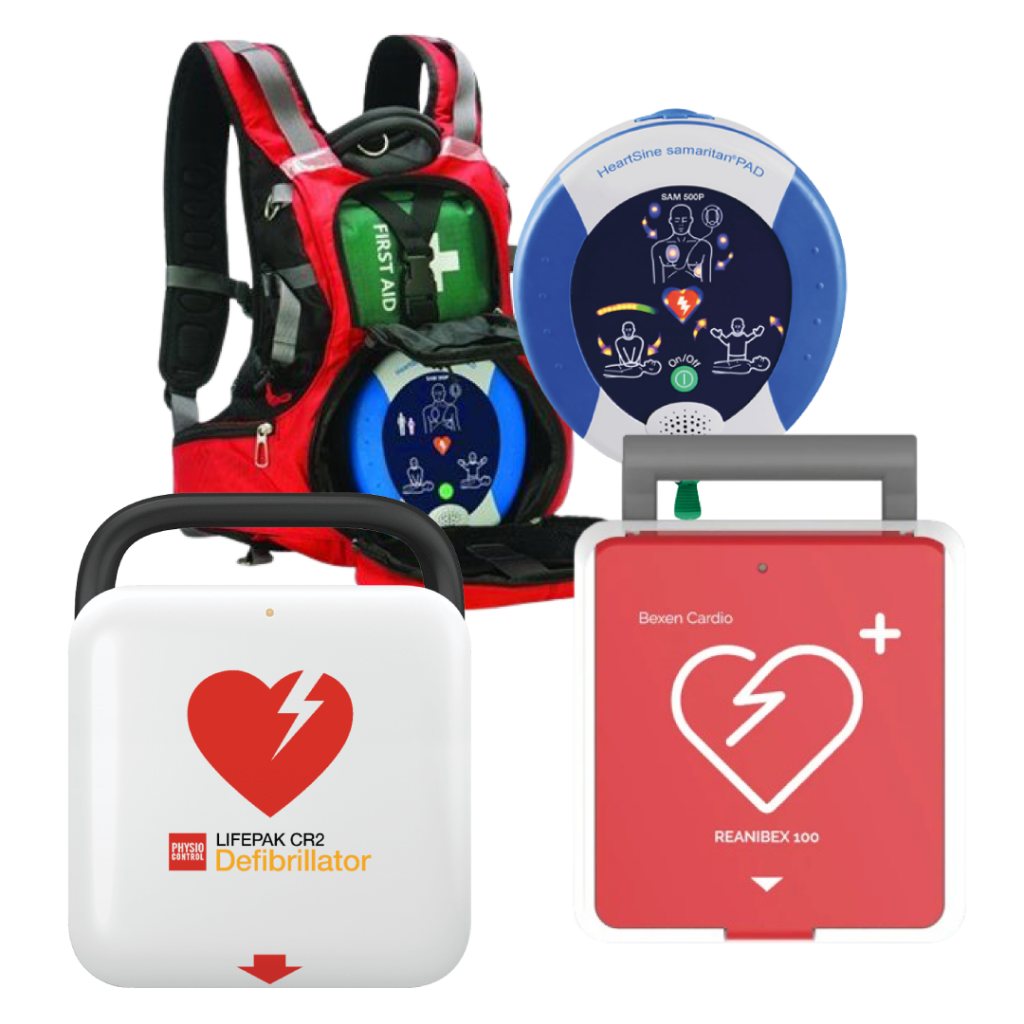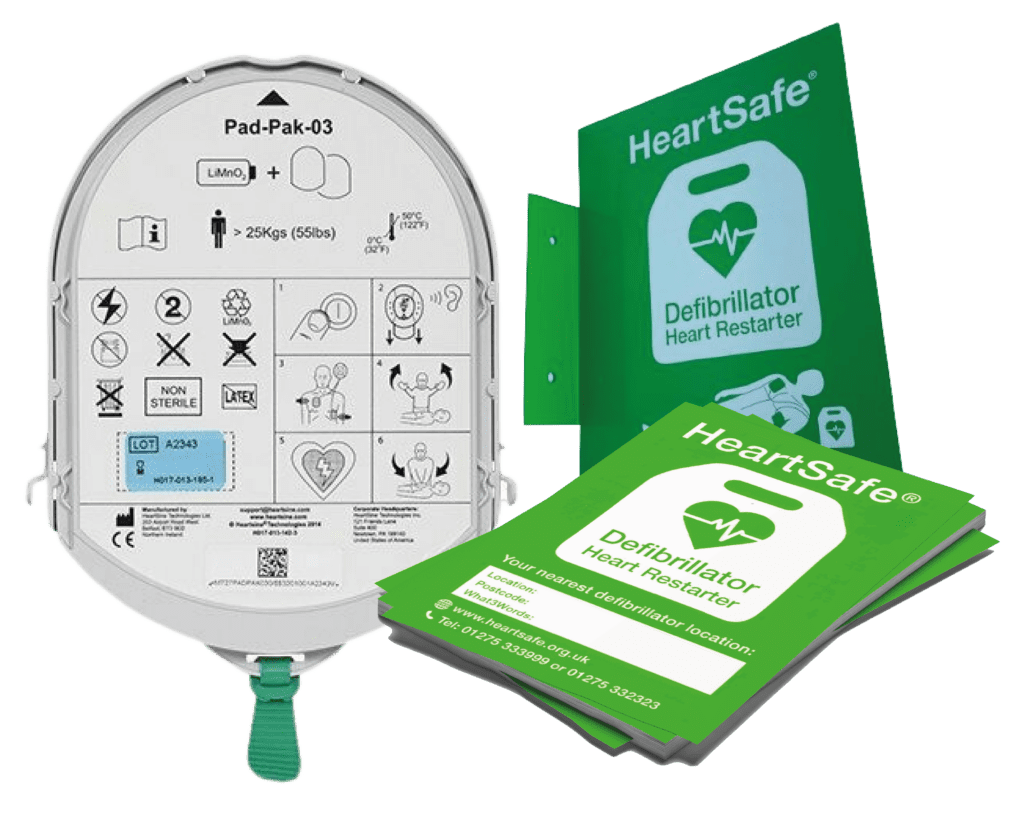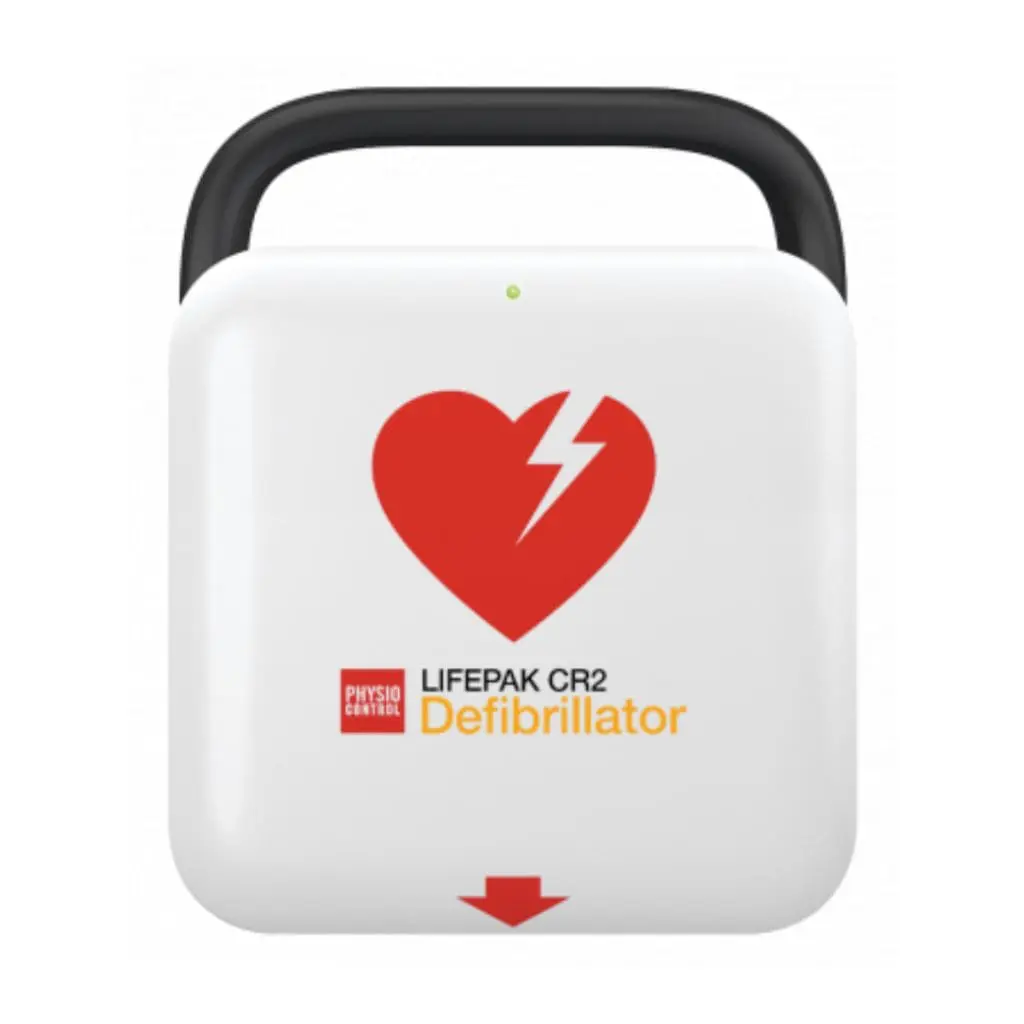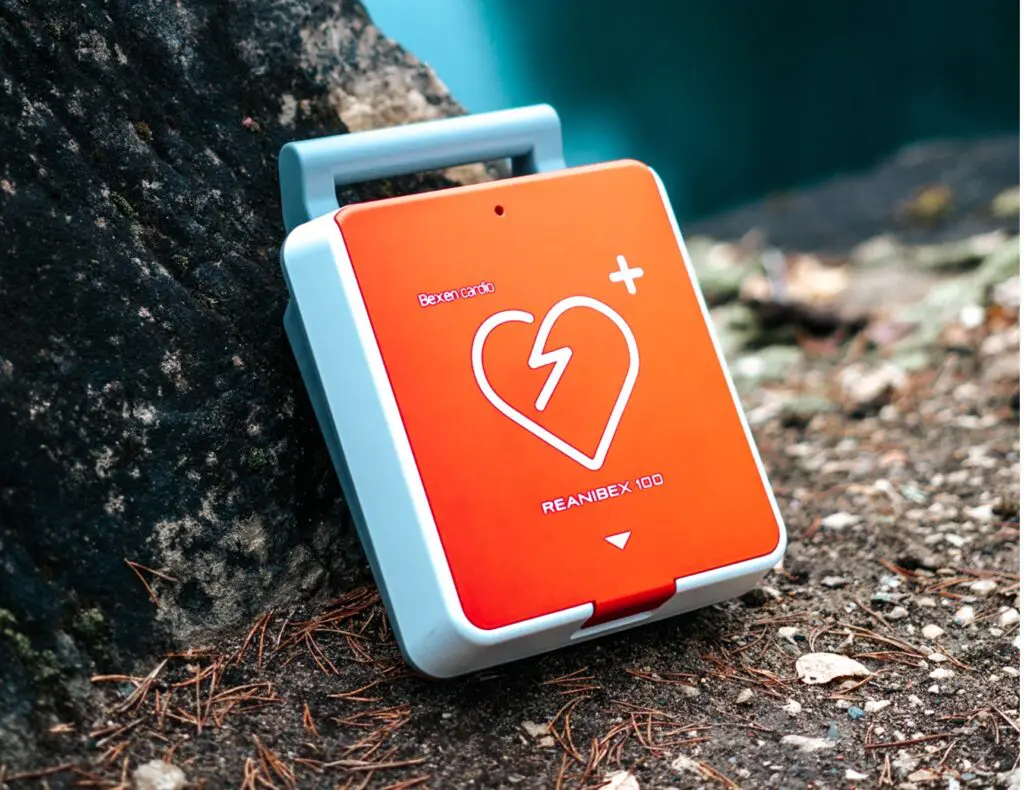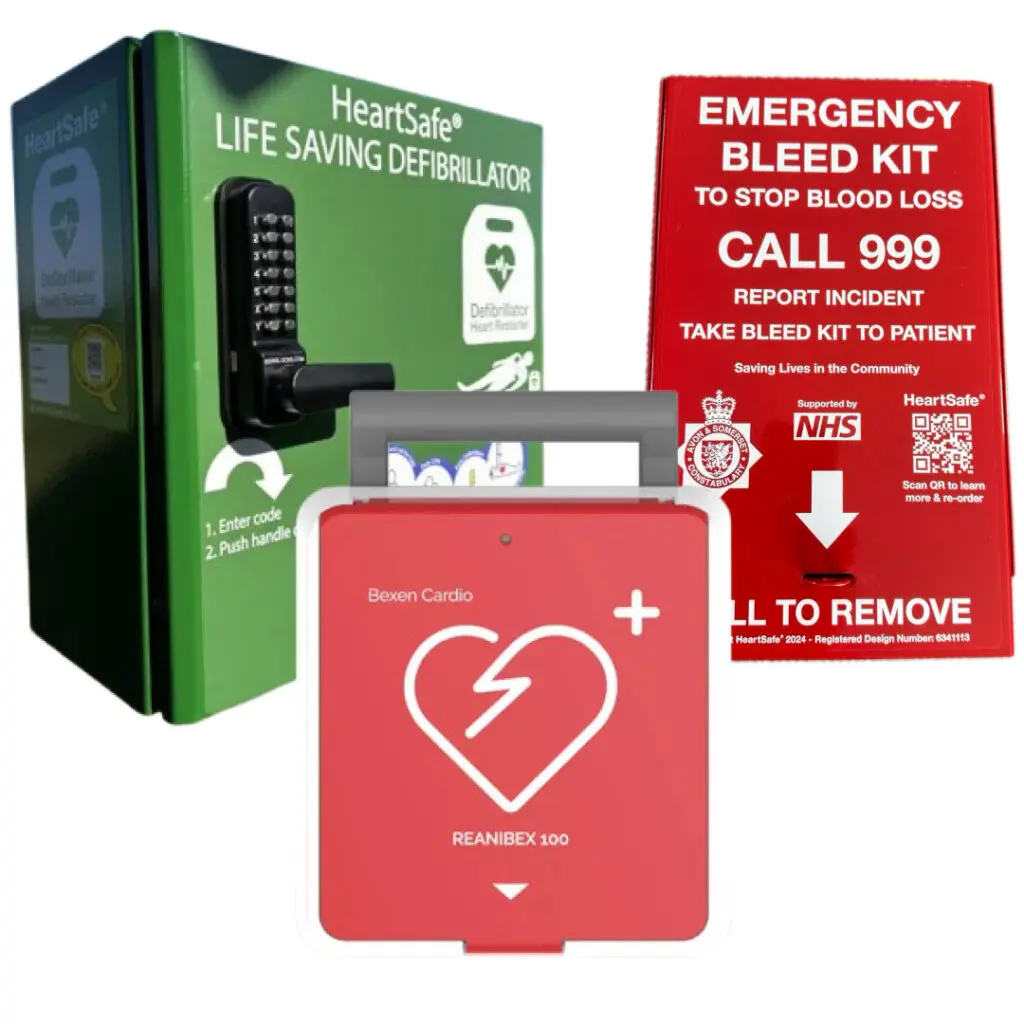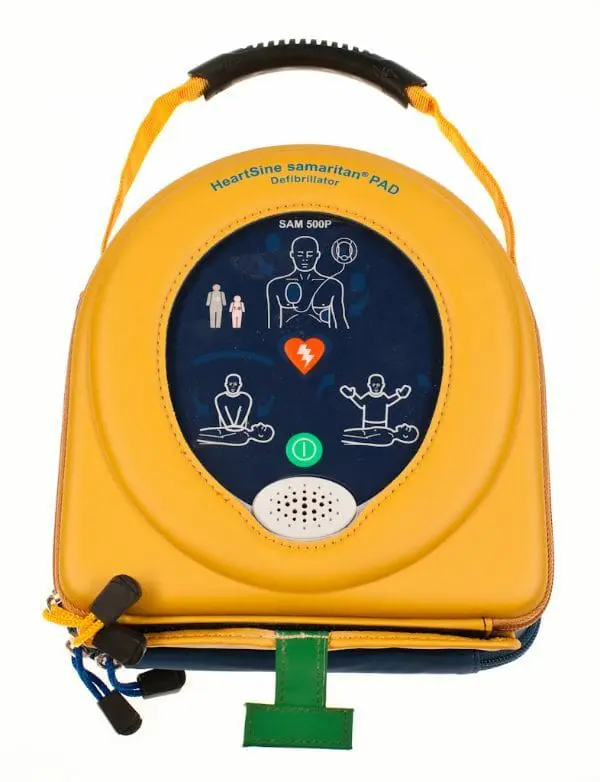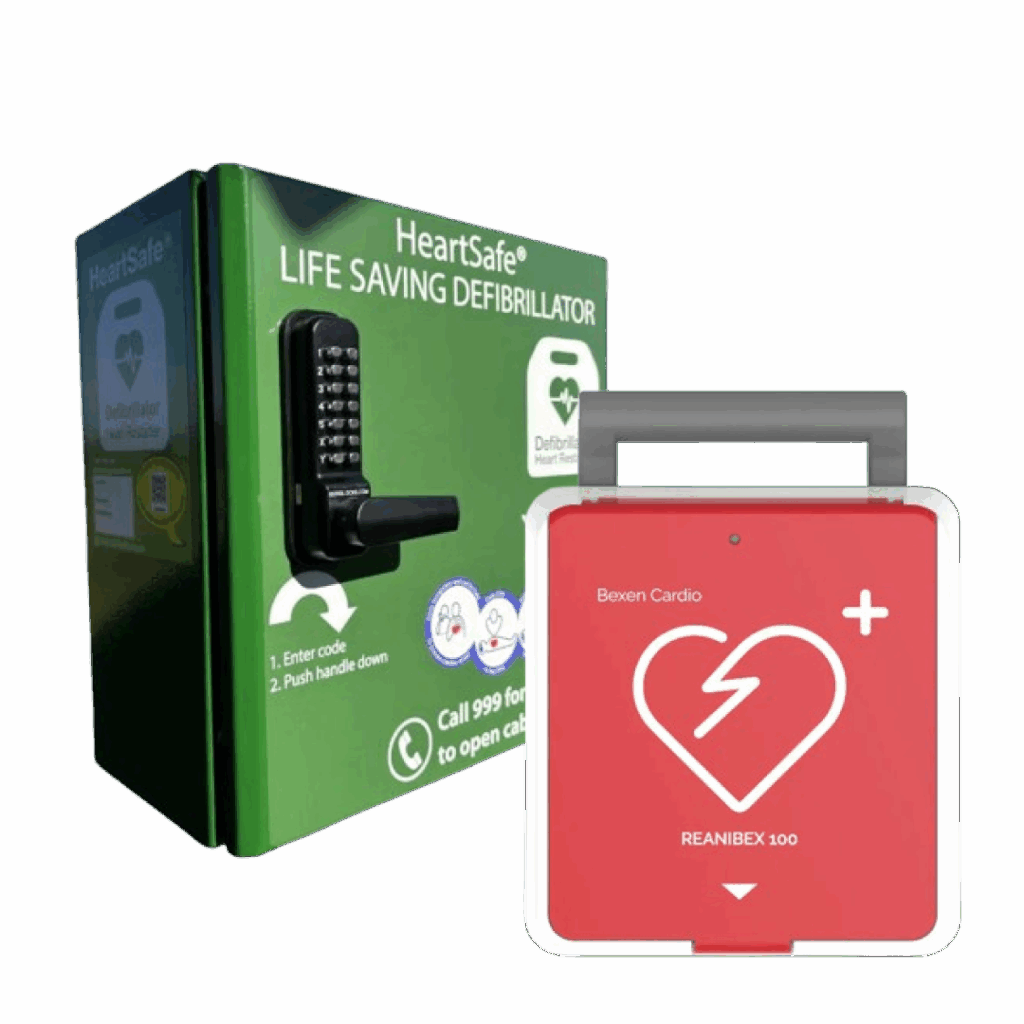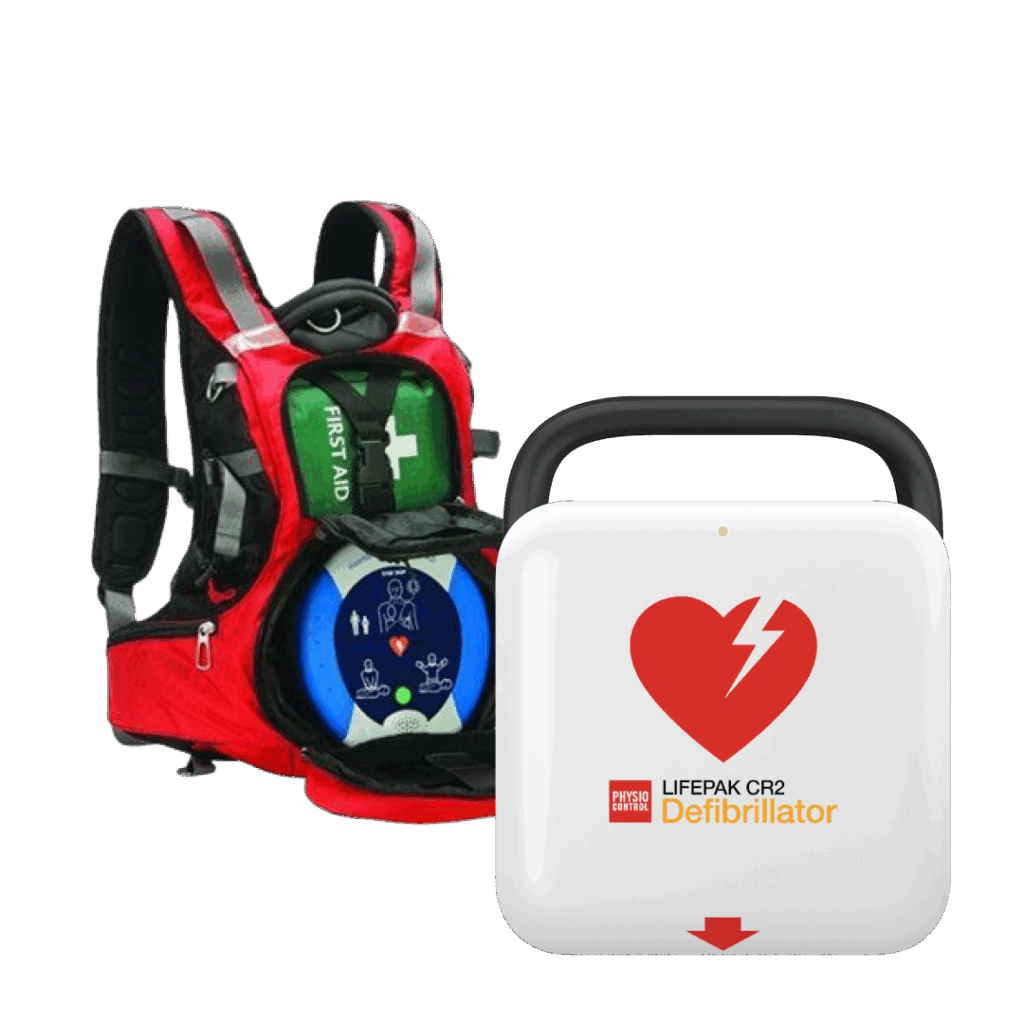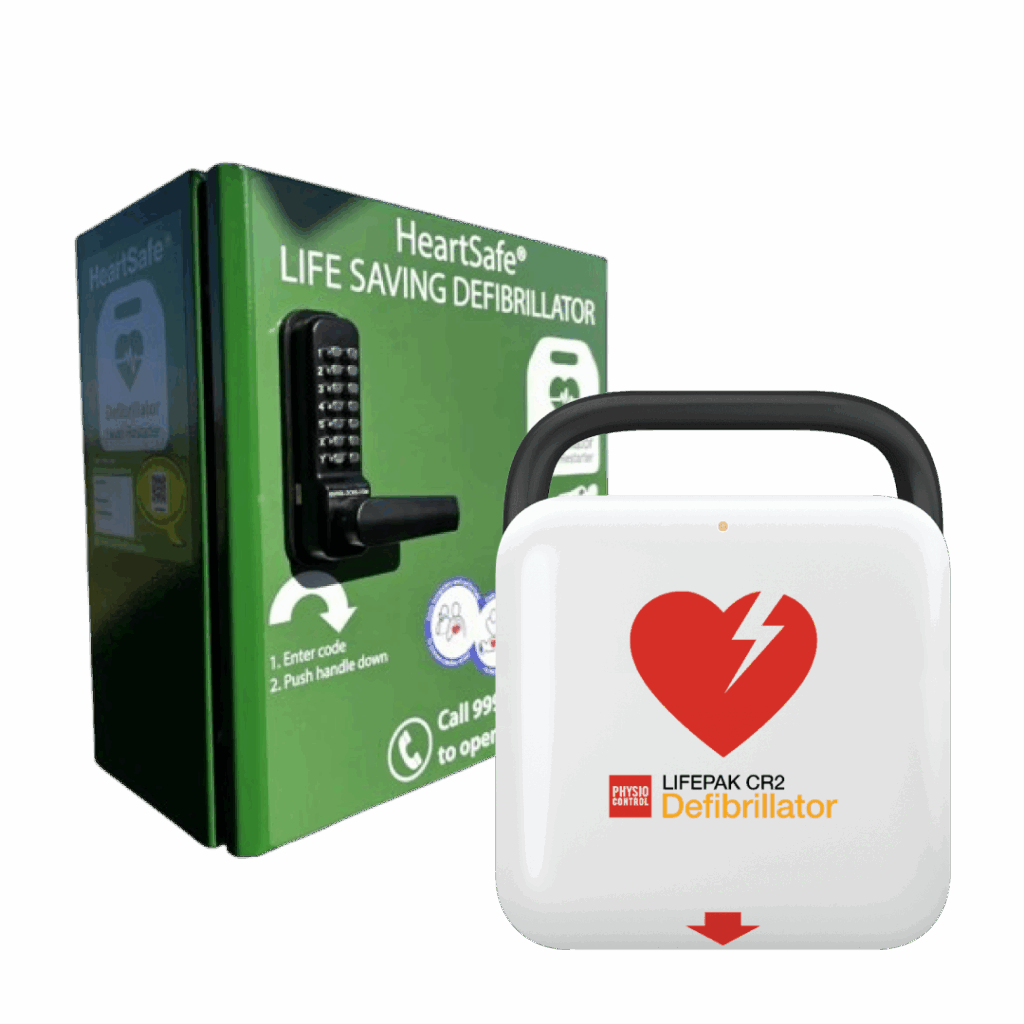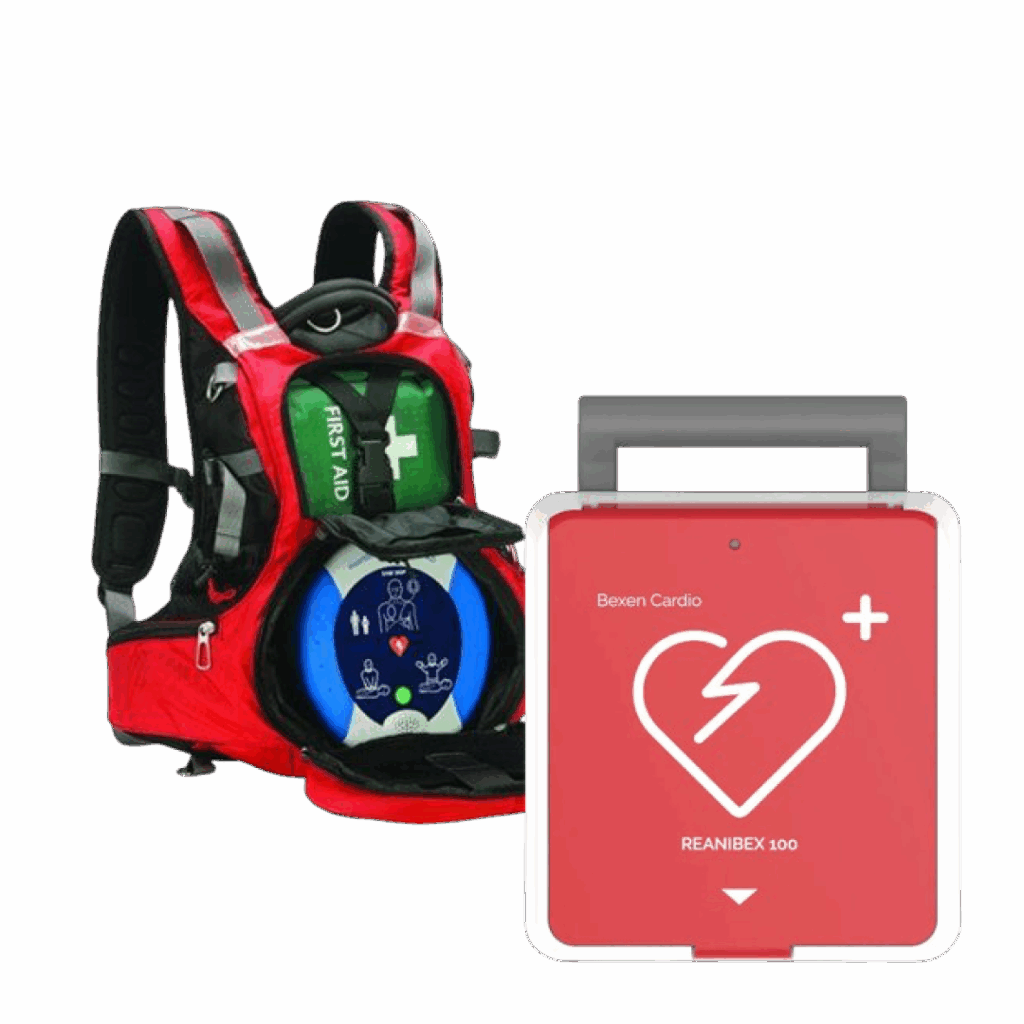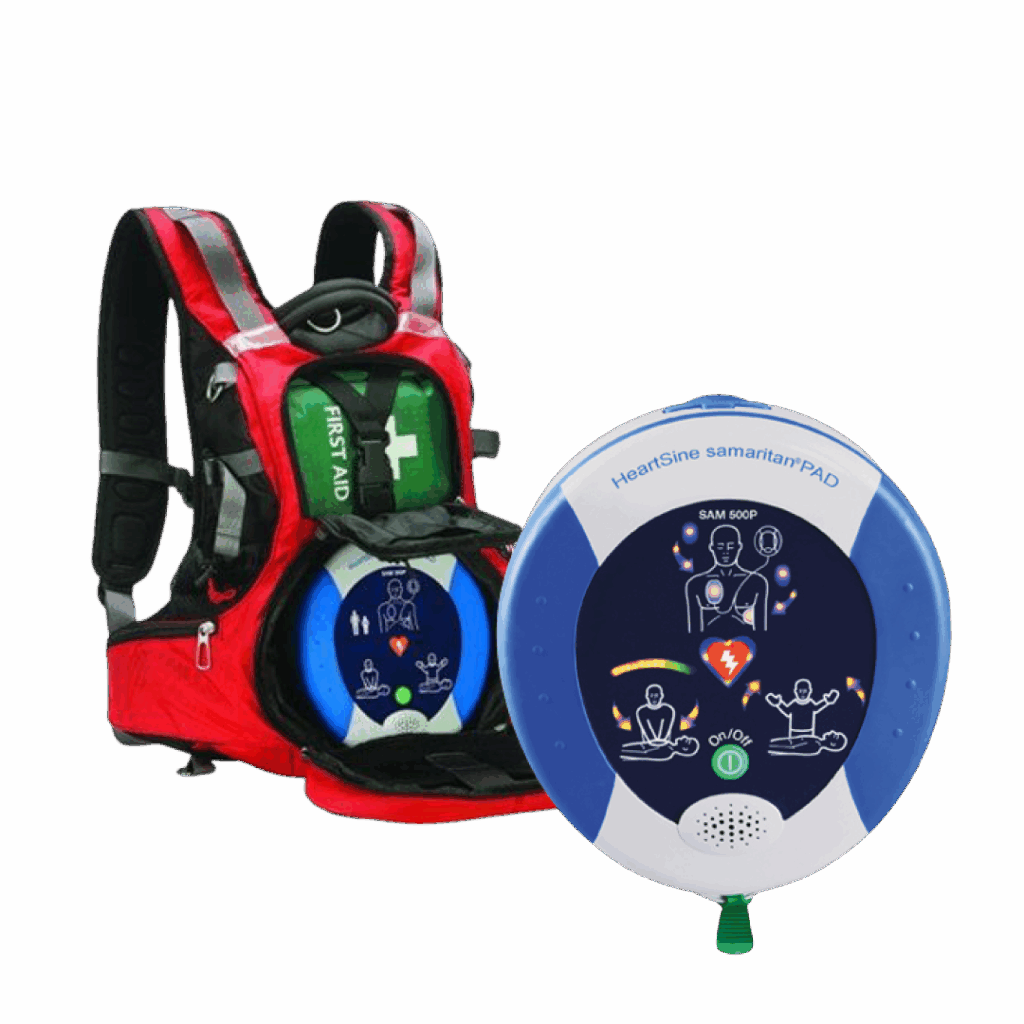Buy A Defibrillator (AED) and Accessories
High visibility, 24-hour medical green beacon with multiple wall signs to bring as much attention as possible!
We have installed a number of new defibrillator cabinets to provide people in the UK with AED access.
On the move, a durable rucksack that a Defibrillator can be brought to the hardest of places to reach.
Our defibrillator accessories can help provide additional lifesaving support and help locate defibrillators.
Find Your Perfect Automated External Defibrillator (AED)
Below is a full list of defibrillator products we offer. This can be a great tool for finding the right defibrillator whether it’s for home or in your community. We offer two views of these products, one simple and one more detailed with a description of each product. You can toggle this view using the buttons directly below this text. If you are looking for the maximum amount of detail when choosing which defibrillator you want to buy within our range, please click ‘see all details’ to find out more information about each product, including the defibrillator cost, battery life and electric shock capabilities.
On the left side of the list of defibrillators, several filters allow you to narrow down your search results easily. You can reorder by price, as well as filter by categories such as external, internal or portable defibrillator packages. With these filters in place, you’ll be able to quickly find the right defibrillator for any situation.
Filter your results...
Not Sure What Defibrillator You Need?
Tailor-made bespoke automated external defibrillator packages to suit your local needs. Is this your first enquiry about buying a defibrillator (Defib/AED)? If so, we recommend you contact us for a brief chat so we can put you on the right path, thus achieving your requirements of sourcing the most suitable defibrillator for your local needs. We are experts and have supplied 1000’s of British defibrillators in the UK. Requesting a callback will ensure your project is a success.
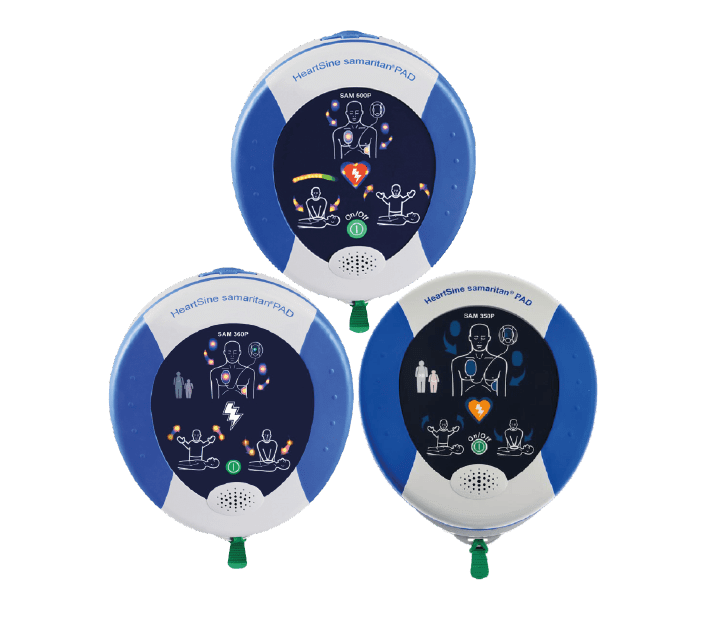
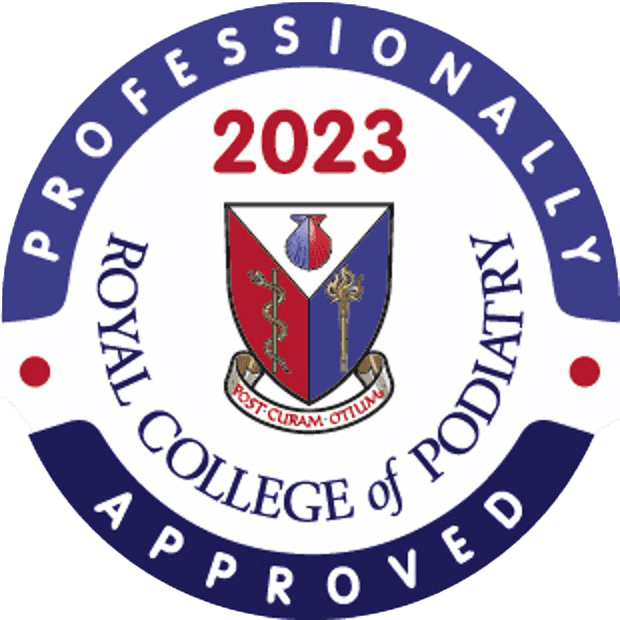
HeartSine Samaritan®
500P Defibrillator
- ICG-based real-time feedback on CPR rate and force (“Push harder,” “Push faster,” “Push slower,” “Good compressions”)
- Audible and visual metronome for CPR rate guidance
- Compact, portable, and lightweight - 1.285 kg (2.83 lb)
- High level of protection from dust and water ingress (IP56)
- 4-year electrode and battery life
- Carry case included
- 8 Year Warranty
- Free consumables (battery/electric pads) as part HeartSine's forward Hearts Campaign
Have An Enquiry?
No matter how unusual, please feel free to send them to enquiries@heartsafe.org.uk where one of our team of advisers will get back to you!
Frequently Asked Questions...
If you are about to purchase a defibrillator (AED) please read.
Should you be approached, our strong advice is never to purchase a second-hand defibrillator unless you have the original certificate of purchase full history of its use and the previous owner’s details, which can then be verified and has not been reported on a lost or stolen list.
Sadly, there have recently been reported thefts of AEDs from unlocked and locked cabinets, and it can only be assumed that these despicable people who show no regard or value for other people’s lives believe a stolen device has some monetary value.
A second-hand defibrillator (AED) has NO monetary value. Each defibrillator has a serial number and can always be traced. AEDs need constant daily/weekly checking and monitoring – without such monitored governance, they may not operate correctly or at all if required to be used at the time of an emergency.
If anyone approaches you selling or advertising an AED – treat the offer with great caution – you may be wasting your money. More importantly, it puts a life at risk. If you can, report it to your local police or ambulance service or AED Locator on 01275 332323 or post@aedlocator.co.uk.
We are providing you with this information to protect you and others and to ensure everything possible is done to avoid the risk of unnecessary death. If we can kill the demand for any stolen defibrillators, then we will be saving lives.
REMEMBER.. if it is cheap and looks a bargain, then it is most likely STOLEN. The AED’s serial number is logged. It can be traced and may not work when you require it.
What should I consider when buying a defibrillator?
The HeartSafe® approach to planning a public access defibrillator in your community, place of work or enjoyment.
You have heard and read about the importance of using a defibrillator when a person has suffered a sudden cardiac arrest.
You want to help your community, friends, neighbours, business associates. Each situation and setting may vary. It is important you choose the right defibrillator and contain it in a safe, easily accessible, very visible location. Over the last 12 years, we have assisted many thousands of locations to become HeartSafe®. There is probably not a type of location we have not placed a defibrillator within a cabinet, indoors or outdoors, on the top of a mountain or on the shoreline of the coasts around the UK. Hamlets, Villages, Towns, Cities, Schools, Pubs, Supermarkets, Village Halls, Sports Centres, and even mobile vehicles have fitted HeartSafe® defibrillators.
You may have a plan of action in mind, and we suggest a phone call/discussion with our trained support team to help put you on the right track. It may take only a few minutes of your time, but a lot will be learnt, and hopefully, it will shortcut the overall time it takes to become a HeartSafe® community.
Can a civilian buy a defibrillator?
Yes, civilians can buy defibrillators, specifically Automated External Defibrillators (AEDs). In many countries, including the UK, no legal restrictions prevent individuals or organizations from purchasing and owning an AED. The intention behind this is to encourage widespread public access to these life-saving devices, as they can be crucial in the event of a sudden cardiac arrest.
However, there are a few things to consider:
- Training: While modern AEDs are designed to be user-friendly with clear voice and visual prompts, it’s beneficial for the owner or potential users to undergo training. This ensures they can use the device confidently and effectively during an emergency. Many organizations offer AED and CPR training courses. This is why we recommend the HeartSine 500P for our customers with its ICG-based real-time feedback on CPR rate and force (“Push harder,” “Push faster,” “Push slower,” “Good compressions”).
- Maintenance: AEDs require regular maintenance. This includes checking battery life, ensuring electrode pads are within their expiry date, and making sure the device is in working order.
- Registration: We recommend that AEDs be registered with local emergency services. This helps emergency responders know where AEDs are located in the community. We also recommend registering your defibrillator with the HeartSafe map as well.
- Good Samaritan Laws: Many countries or states have “Good Samaritan” laws that protect individuals who voluntarily provide emergency assistance to those who are injured or ill. These laws often cover the use of AEDs, providing legal protection to those who use them in good faith during emergencies, though the specifics can vary by jurisdiction.
- Cost: While AEDs have become more affordable over the years, they still represent a significant investment. As mentioned earlier, prices can vary based on the model and features.
If considering purchasing an AED, it’s a good idea to research local regulations, available training, and potential funding or grant opportunities.
How much does it cost to buy a defibrillator?
Defibrillator costs can vary widely depending on its type, features, brand, and where it’s purchased. Here’s a general breakdown of the costs associated with different types of defibrillators and their housings:
- Basic AED Packages:
- These packages are designed for public places such as schools, airports, and offices. They typically include a basic AED along with an internal or external cabinet.
- With Internal Cabinet: Often used for indoor installations, the combined cost of the AED and its housing can range from £900 to £1,700.
- With External Cabinet: These weatherproof packages might be priced between £1,500 to £2,500 for outdoor installations.
- Advanced AED Packages:
- These packages come with AEDs that have additional features, such as ECG displays and manual override capabilities. We believe these are not suitable for use by the general public.
- With Internal Cabinet: Suitable for indoor setups, the total cost for this package can range from £1,700 to £2,700.
- With External Cabinet: Designed for outdoor use and often including features like heating for colder climates, the combined cost can vary from £1,800 to £3,000.
- Portable AED Packages:
- These are designed for on-the-go scenarios and typically include an AED with a rucksack or carry case for easy transport. First responders and travelling sports teams commonly use them.
- The total cost for these packages can range from £1,000 to £2,200, depending on the AED’s features and the quality of the carry case.
It’s important to note that these prices are approximate and can vary based on the specific brand, model, and features of the defibrillator, as well as where it’s purchased. Regular maintenance, replacement pads, and batteries can add to the ongoing cost.
A second-hand defibrillator (AED) has NO monetary value. Each defibrillator has a serial number and can always be traced. AEDs need constant daily/weekly checking and monitoring – without such monitored governance, they may not operate correctly or at all if required to be used during an emergency.
If anyone approaches you selling or advertising an AED – treat the offer with great caution – you may be wasting money. More importantly, it puts a life at risk. If you can, report it to your local police, ambulance service, or AED Locator on 01275 332323 or post@aedlocator.co.uk.
We are providing you with this information to protect you and others and to ensure everything possible is done to avoid the risk of unnecessary death. If we can kill the demand for stolen defibrillators, we will save lives.
REMEMBER.. if it is cheap and looks a bargain, then it is most likely STOLEN. The AED’s serial number is logged. It can be traced and may not work when you require it.
Do you legally have to have a defibrillator?
Currently (2023), there is no legal requirement in the UK for businesses or other organisations to provide a defibrillator. That being said, Health and Safety Executive (HSE) guidelines encourage the consideration of defibrillators in the workplace setting, especially in environments where the risk of a cardiac arrest is increased. Furthermore, while not legally mandated, many organisations choose to provide a defibrillator due to their life-saving potential. The Resuscitation Council UK suggests that defibrillators should be made available in places where large numbers of people gather or where people at high risk of cardiac arrests are likely to be found. It’s important to consult your local regulations and consider the benefits of having a defibrillator on hand.
What is the difference between semi and fully-automatic defibrillators?
The key difference between semi-automatic and fully automatic defibrillators lies in the delivery of the shock. A semi-automatic defibrillator requires the user to press a button to deliver the shock once the device has analysed the heart rhythm and determined a shock is needed. This allows for some control over shock delivery, which can be beneficial in complex rescue situations where timing is crucial.
On the other hand, a fully automatic defibrillator will analyse the heart rhythm and, if a shockable rhythm is detected, will automatically deliver the shock without the need for the rescuer to press a button. This can be particularly useful in high-stress situations or when the rescuer is untrained, as it eliminates the potential for hesitation or error in delivering the shock. However, both types of AEDs will guide the user through the rescue process with clear voice and visual prompts, making them accessible and easy to use for both trained and untrained individuals.
What is a sudden cardiac arrest?
Sudden Cardiac Arrest (SCA) is a life-threatening emergency that occurs when the heart suddenly stops beating. This abrupt halt in heart function leads to a cessation of blood flow to the body’s vital organs, including the brain. The most common cause of SCA is a disruption in the heart’s electrical system, which can result from conditions such as coronary heart disease, physical stress, or certain inherited disorders. If not treated immediately, usually through the administration of an electric shock via a defibrillator, SCA typically leads to death. It’s crucial to remember that SCA is different from a heart attack, but it can occur alongside or following a heart attack. Unlike a heart attack, which is primarily a circulation problem, SCA is an electrical problem that interrupts the rhythm of the heart.


